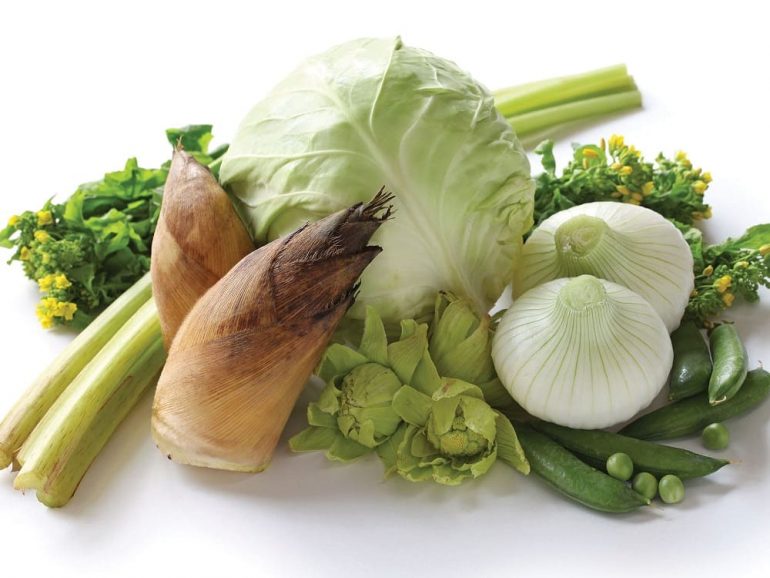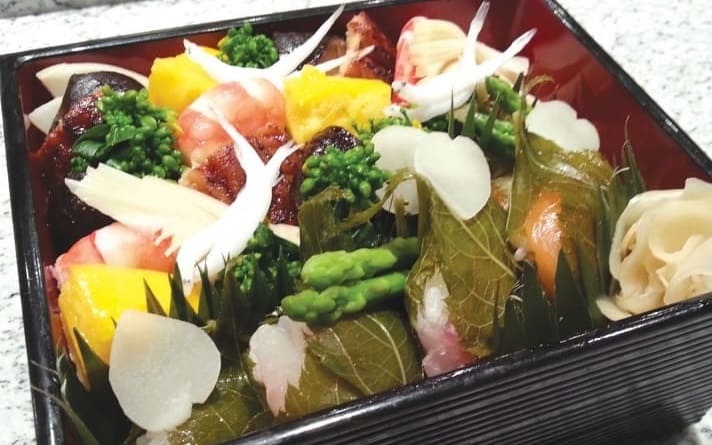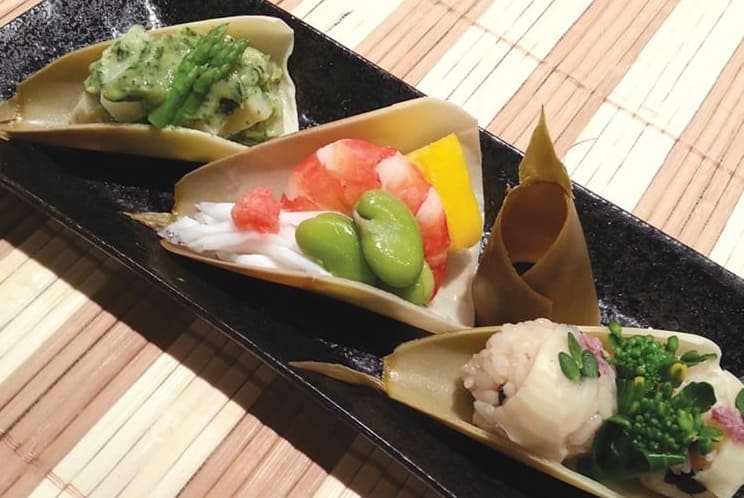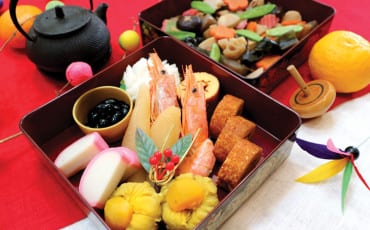Articles
Recipes
Apr 1, 2014
Recipes for Japanese Spring Vegetables
Springtime spells the end of winter and the abundance of fresh produce. Tokyo Sushi Academy shows you creative ways to enjoy Japan’s Spring vegetables.

Japanese cuisine places a strong emphasis on the freshness and seasonality of a variety of ingredients. The Japanese are known to enjoy the taste of high-quality food ingredients that are available only during a specific time and season. One of the beloved harbingers of Spring is Takenoko (bamboo shoots). They are usually harvested around March to May in Japan, and are considered a Spring delicacy. However, fresh bamboo shoots tend to be bitter so they need to be pre-cooked after being harvested. In any case, in today’s modern and fast-paced society, most people use convenient pre-cooked bamboo shoots instead of freshly harvested ones.
Takenoko is known for its slightly cold and subtly sweet flavour, and can be served on its own as a side dish or together with other ingredients in a main dish. Apart from its refreshing flavour, studies have also shown that bamboo shoots have a number of health benefits, such as cancer prevention, weight loss, and improving digestion.
One of the quintessential Japanese springtime dishes is Takenoko Gohan, where the bamboo shoots are cooked together with rice and Shiitake mushrooms. The bamboo shoots lend a subtle aroma to the rice, and retain its crunchy texture. Another way of enjoying Takenoko would be in a Chirashi Sushi. Also known as “scattered sushi”, Chirashi Sushi brings together many colourful ingredients such as boiled seafood, vegetables, and pickles for a toothsome treat.
Another popular Spring vegetable is Nanohana, which is most closely related to broccoli. While plain-green Nanohana is now readily available almost all year round, it’s only in early spring when you see the bright yellow-green hues of Nanohana. This is a very versatile vegetable – the florets, stems, and leaves are all edible – and can be enjoyed in many different ways. The most traditional way to eat Nanohana in Japan is as the side dish Ohitashi, but you can also enjoy it steamed, boiled, stir-fried, in soups, and even deep-fried with tempura batter. Unlike several other early Spring vegetables, Nanohana doesn’t taste bitter or have a tannic quality to it, so it doesn’t need any special pre-treatment.
(Text Vanessa Tai)
Spring Vegetable Chirashi Sushi

Ingredients (for 2 persons)
Sushi rice 500g
Ingredients A
(To be mixed with sushi rice)
4 tbsp chopped boiled Kanpyo (dried gourd shavings) pickles
1 pinch of white sesame seed
1 pinch of Nori dried seaweed
Ingredients B
(To be put on top of mixed sushi rice)
4 pieces boiled Shiitake mushroom (cut into half)
4 slices Takenoko (bamboo shoot)
4 pieces salt-boiled prawn (diced)
4 pieces salt-boiled broccoli
8 pieces boiled Takenoko (cut into sakura leaf shape)
¼ block thick Japanese Tamago-yaki (grilled egg)
8 pieces Sakura leaf
4 slices red snapper Sashimi
4 slices salmon Sashimi 2 sticks boiled Fuki (butterbur)
2 sticks boiled asparagus
Directions
1. Mix ingredients A with sushi rice
2. Put mixed sushi rice in the food box
3. Put prepared ingredients B in the box
Spring Vegetable Appetisers

A: Takenoko with Saikyo Miso dressing (Left)
Ingredients (for 2 persons):
60g boiled Takenoko (diced)
2 tbsp Saikyo Miso
2 Sansho (Japanese pepper) leaves
Directions:
1. Grind Sansho leaves with Saikyo Miso
2. Mix with diced boiled Takenoko
B: Prawn and Spring Vegetables (Centre)
Ingredients:
2 pieces salt-boiled prawn
6 pieces boiled broad bean 2 pieces Tamago-yaki (grilled egg) 2 pieces boiled Zenmai (flowering fern)
1 pinch boiled swordfish
C: Takenoko Rice (Right)
Ingredients:
2 slices Takenoko (thinly sliced)
1 pinch Soy sauce
1 pinch Mirin
40 g cooked rice
Directions:
1. Mix rice with all the ingredients in a bowl
2. Place A to C on a bamboo sheath, and serve
Recipes provided by Tokyo Sushi Academy
133 New Bridge Road Chinatown Point B2-17, Singapore 059413
Telephone: 6444 7828
Email: info@sushiacademy.sg
Website: www.sushiacademy.sg








